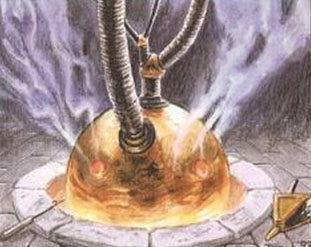 I recently watched Oblivion, which is a mediocre science fiction film starring Tom Cruise. It features a soundtrack which was apparently written by someone who watched Inception the night before and just couldn’t get it out of his head. So when I came out of the theater that night, I decided that I needed to watch Inception to clear both the mediocrity of Oblivion’s hackneyed score and the mediocrity of its hackneyed science fiction.
I recently watched Oblivion, which is a mediocre science fiction film starring Tom Cruise. It features a soundtrack which was apparently written by someone who watched Inception the night before and just couldn’t get it out of his head. So when I came out of the theater that night, I decided that I needed to watch Inception to clear both the mediocrity of Oblivion’s hackneyed score and the mediocrity of its hackneyed science fiction.
This, in turn, resulted in me diving inadvertently back into online discussions concerning the “true meaning” and “hidden depths” of the film. Some of this stuff is basically people saying “you may not have noticed that Rosebud is a sled” and some of this stuff is people saying “you may not have realized it, but Rosebud is actually a shapeshifting alien from the planet Vulcan”; but some of it is actually interesting insight into a movie which is not particularly complex but is remarkably rewarding in its depth.
Something that appears to have been completely overlooked, however, is the true nature of Cobb’s spinning top: Cobb describes this as his “totem”, but it notably doesn’t work like any other totem in the movie. There’s a theory that Cobb’s real totem is actually his wedding ring (which would presumably have some feature on its inner side that only he knows the feel of), but whatever his real totem is (if he has one) is largely inconsequential to the issue of the spinning top.
The short version: Cobb is not using the top as a totem in the same way that everyone else in the movie is.
See, a totem tells you if you’re in someone else’s dream. If you’re in someone else’s dream, they (or their architect) can’t properly realize your totem within the dream and you’ll be able to spot the inconsistency. (Saito does the same thing, albeit inadvertently, with a carpet near the beginning of the film.)
Cobb, however, is not using the top to test if he’s in someone else’s dream: He’s using it to test if he’s in his own dream. He’s not afraid of being hijacked by another dream team; he’s afraid of losing himself in his own personal Limbo. A traditional totem doesn’t help you with that because if you’re lost in your own dream you know what your totem feels like and you’ll simply create it for yourself. What seems to be true in the movie is that both Cobb and his wife have created a subconscious compulsion for themselves (probably using techniques similar to those which militarized Fischer’s unconscious): If they’re dreaming, their subconscious will cause the top to spin forever without falling over.
To sum up: When the other members of the team use their totems, they’re checking to see if they’ve been hijacked into another person’s dreams. When Cobb uses the top, he’s checking to see if he’s gotten lost in his own dream.
















